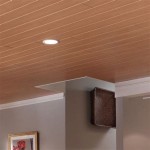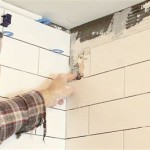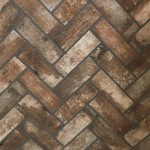Making a Smooth Transition from Carpet to Tile Flooring in the Bathroom
Transforming the flooring of your bathroom from carpet to tile can elevate its aesthetics and functionality. While the transition process may seem daunting, careful planning and execution can ensure a seamless result. Here are some essential aspects to consider:
1. Removal of Existing Carpet and Padding
Begin by removing the carpet and its padding. Use a utility knife to cut along the edges of the carpet and carefully pry it loose. Dispose of the carpet and padding appropriately. Next, inspect the subfloor for any damage or unevenness and make any necessary repairs.
2. Tile Selection and Layout
Choose tiles that are suitable for bathroom use, considering factors such as moisture resistance, durability, and slip resistance. Plan the tile layout carefully, ensuring an even distribution of cuts and minimizing waste. Determine the starting point and use a chalk line to mark the placement of the tiles.
3. Subfloor Preparation
For a secure installation, the subfloor should be level, smooth, and free from any protrusions. Use a level to check for unevenness and make adjustments as needed. If the subfloor is not flat, consider using a self-leveling compound to create an even surface.
4. Mortar Application
Apply mortar evenly to a designated area using a notched trowel. The notches in the trowel will create ridges that provide a secure bond between the tiles and the subfloor. Spread the mortar to a thickness of about 3/16 inches.
5. Tile Placement and Grouting
Gently press the tiles into the mortar, ensuring they are level and properly spaced. Use tile spacers to ensure consistent grout lines. Allow the tiles to set for approximately 24 hours before grouting. Mix the grout according to the manufacturer's instructions and apply it to the joints between the tiles. Use a grout float to smooth the grout and remove excess.
6. Sealing
Once the grout has cured, apply a grout sealer to protect it from moisture and staining. Allow the sealer to penetrate for the recommended time and then wipe off any excess. Sealing the grout will enhance its durability and prevent discoloration.
7. Transition Trim
Finally, install transition trim around the edges of the tiles to connect them smoothly with other flooring surfaces. Choose transition trim that complements the tiles and the overall bathroom design. Secure the transition trim using nails or adhesive.
By following these steps and paying attention to detail, you can create a beautiful and durable tile floor in your bathroom. Remember to consult a professional if you encounter any challenges or require assistance with more complex installations.

Tile To Carpet Transition 4 Options For A Stunning Floor

Tile To Carpet Transition 4 Options For A Stunning Floor

How To Transition Carpet Ceramic Tile In A Bathroom Doorway

4 Tile To Carpet Transition Options For A Stunning Floor

Smooth Tile Floor Transitions Timber Flooring Carpet

Tile To Carpet Transition A Look At The Best Options For Your Home

Tile Transition Strips How To Handle Flooring Transitions

How To Transition Carpet Tile

Carpet Ramp Edge Easyshims Practical Slope Under Carpets Now

Guide To Flooring Transition Strips Nufloors
Related Posts







